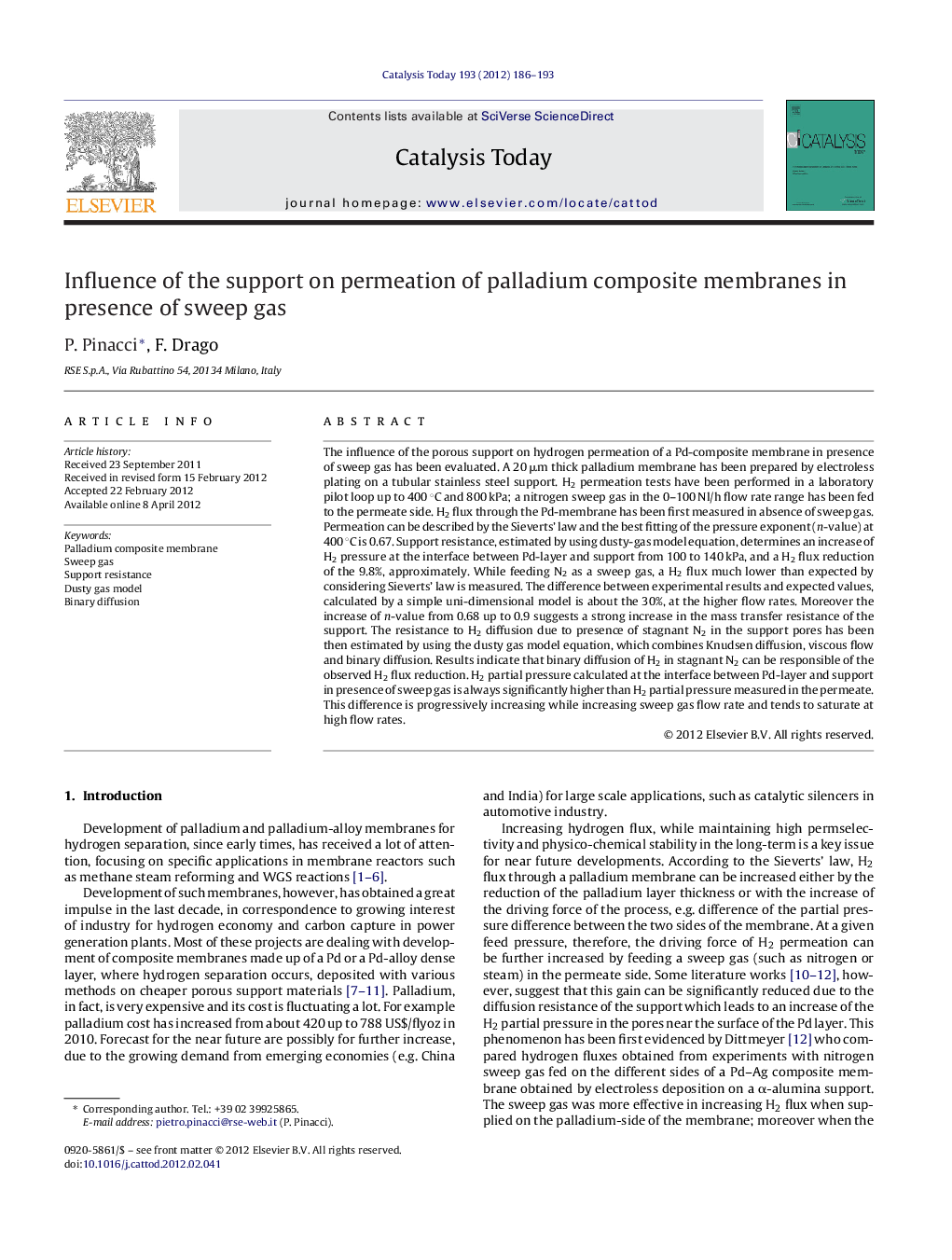| کد مقاله | کد نشریه | سال انتشار | مقاله انگلیسی | نسخه تمام متن |
|---|---|---|---|---|
| 55080 | 47039 | 2012 | 8 صفحه PDF | دانلود رایگان |

The influence of the porous support on hydrogen permeation of a Pd-composite membrane in presence of sweep gas has been evaluated. A 20 μm thick palladium membrane has been prepared by electroless plating on a tubular stainless steel support. H2 permeation tests have been performed in a laboratory pilot loop up to 400 °C and 800 kPa; a nitrogen sweep gas in the 0–100 Nl/h flow rate range has been fed to the permeate side. H2 flux through the Pd-membrane has been first measured in absence of sweep gas. Permeation can be described by the Sieverts’ law and the best fitting of the pressure exponent (n-value) at 400 °C is 0.67. Support resistance, estimated by using dusty-gas model equation, determines an increase of H2 pressure at the interface between Pd-layer and support from 100 to 140 kPa, and a H2 flux reduction of the 9.8%, approximately. While feeding N2 as a sweep gas, a H2 flux much lower than expected by considering Sieverts’ law is measured. The difference between experimental results and expected values, calculated by a simple uni-dimensional model is about the 30%, at the higher flow rates. Moreover the increase of n-value from 0.68 up to 0.9 suggests a strong increase in the mass transfer resistance of the support. The resistance to H2 diffusion due to presence of stagnant N2 in the support pores has been then estimated by using the dusty gas model equation, which combines Knudsen diffusion, viscous flow and binary diffusion. Results indicate that binary diffusion of H2 in stagnant N2 can be responsible of the observed H2 flux reduction. H2 partial pressure calculated at the interface between Pd-layer and support in presence of sweep gas is always significantly higher than H2 partial pressure measured in the permeate. This difference is progressively increasing while increasing sweep gas flow rate and tends to saturate at high flow rates.
Figure optionsDownload high-quality image (123 K)Download as PowerPoint slideHighlights
► The influence of the porous support on hydrogen permeation of a 20 μm thick Pd-composite membrane in presence of sweep gas has been evaluated.
► While feeding N2 as a sweep gas, a H2 flux lower than expected by considering Sieverts’ law is measured (up to 30%).
► The resistance to H2 diffusion due to presence of stagnant N2 in the support pores has been estimated by the dusty gas model.
► Binary diffusion of H2 in stagnant N2 can be responsible of the observed H2 flux reduction.
► H2 partial pressure at the interface between Pd-layer and support in presence of sweep gas is always significantly higher than pressure calculated in absence of sweep gas.
Journal: Catalysis Today - Volume 193, Issue 1, 15 October 2012, Pages 186–193